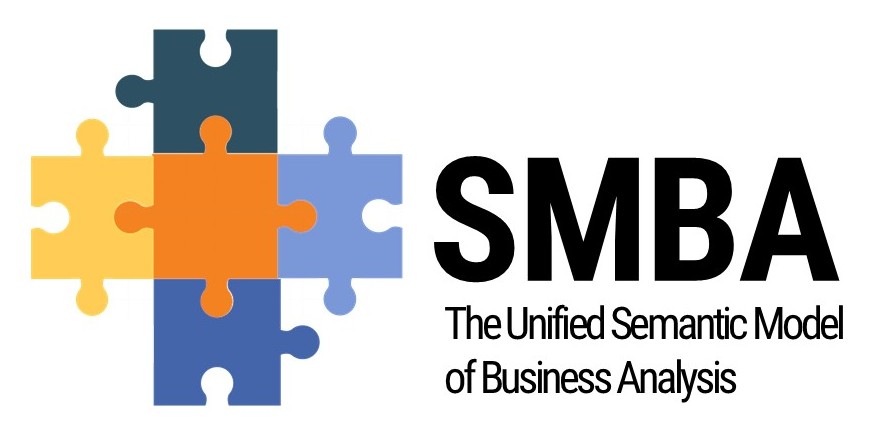The SMBA Thesaurus: A Semantic Foundation for Business Analysis
The Unified Semantic Model of Business Analysis (SMBA) is an open, community-driven effort to create a unified, harmonized, machine-readable, and machine-understandable representation of knowledge about Business Analysis as a profession.
Drawing on authoritative standards such as the IIBA BABOK® Guide, PMI-PBA, IREB, and IQBBA, SMBA integrates their terminology and conceptual structures into a shared semantic foundation. This foundation is expressed through controlled vocabularies, SKOS-based thesauri, taxonomies, and ontologies that together form a consistent and logically connected view of BA knowledge.
SMBA does not seek ownership of the content drawn from these sources. Its purpose is to build a unified, comprehensive, and mutually agreed semantic model — a structure that respects original intellectual property while enabling interoperability and clarity across standards.
The ultimate goal is to enable smarter tools and systems — from knowledge management platforms to AI- and LLM-powered assistants — that can accurately interpret and apply Business Analysis knowledge.
SMBA welcomes collaboration from practitioners, researchers, and organizations who share the vision of making Business Analysis knowledge transparent, connected, and ready for the digital age.
Unified Terminology
Harmonizes terminology across multiple BA standards into a single, coherent semantic model.
Machine-Readable
Structured using SKOS, RDF, and ontologies for seamless integration with modern AI and knowledge systems.
Open & Collaborative
Community-driven project respecting intellectual property while fostering interoperability.
Standards-Based
Built on authoritative sources including IIBA BABOK®, PMI-PBA, IREB, and IQBBA.
Interconnected Knowledge
Creates meaningful relationships between concepts across different BA frameworks.
Future-Ready
Designed for integration with AI-powered assistants and next-generation knowledge platforms.
Available Terms
4 concepts currently available
- ArchitectureThe design, structure, and behaviour of the current and future states of a structure in terms of its components, and the interaction between those components.
- Business ArchitectureThe design, structure, and behavior of the current and future states of an enterprise to provide a common understanding of the organization.
- Enterprise ArchitectureA description of the business processes, information technology, people, operations, information, and projects of an enterprise and the relationships between them.
- Requirements ArchitectureThe requirements of an initiative and the interrelationships between these requirements.
